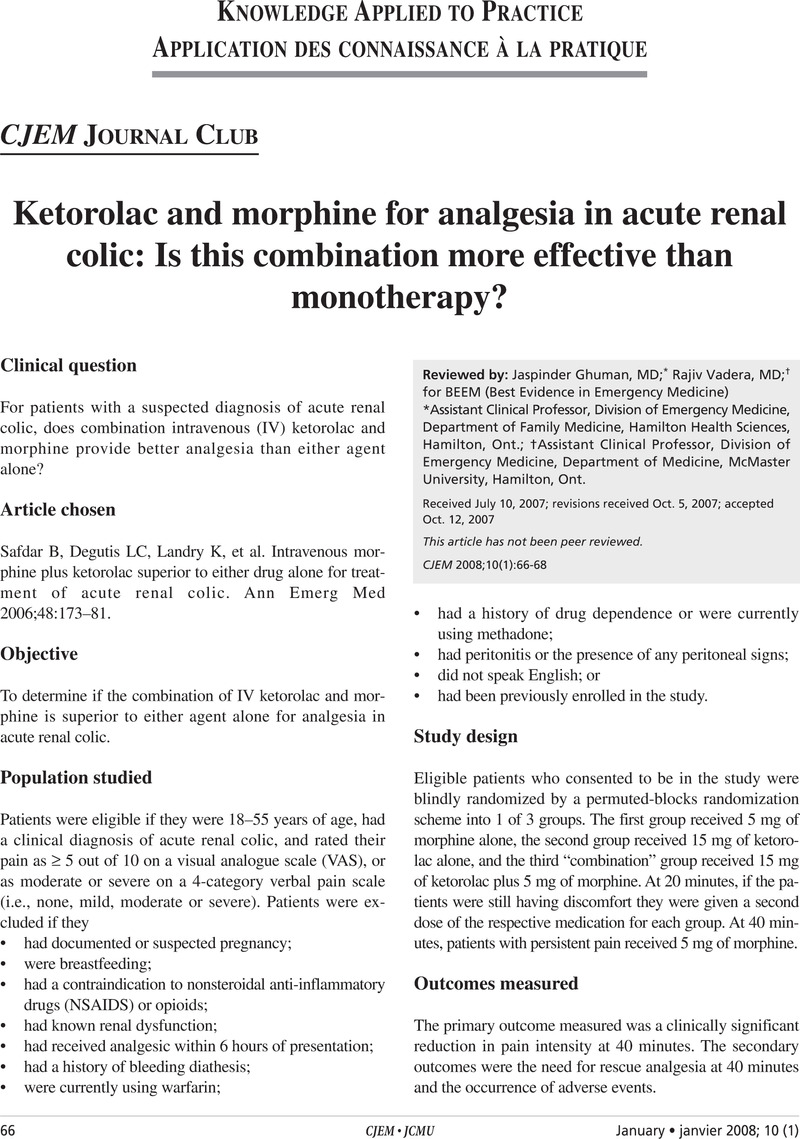Crossref Citations
This article has been cited by the following publications. This list is generated based on data provided by Crossref.
El-Hefnawy, Ahmed S.
Abed, Ahmed
and
Shokeir, Ahmed A.
2012.
Urolithiasis.
p.
353.
Taherinia, Ali
Shahsavari, Soodeh
Heidarpour, Azadeh
Tabatabaei, Seyyed Mohammad
and
Vahdat, Afsoon
2015.
Comparing the effects of pethidine and diclofenac suppository on patients with renal colic in the emergency department.
Journal of Emergency Practice and Trauma,
Vol. 2,
Issue. 1,
p.
3.
Pourafzali, Seyed Mehdi
Sanei, Abdolrahim
Abdolrazaghnejad, Ali
and
Poursadra, Elahe
2023.
A Comparative Study of the Effect of Intravenous Morphine and Ketorolac on Pain Control in Patients with Renal Colic.
Advanced Biomedical Research,
Vol. 12,
Issue. 1,
Toumia, Marwa
Sassi, Sarra
Dhaoui, Randa
Kouraichi, Cyrine
Bel Haj Ali, Khaoula
Sekma, Adel
Zorgati, Asma
Jaballah, Rahma
Yaakoubi, Hajer
Youssef, Rym
Beltaief, Kaouthar
Mezgar, Zied
Khrouf, Mariem
Sghaier, Amira
Jerbi, Nahla
Zemni, Imen
Bouida, Wahid
Grissa, Mohamed Habib
Boubaker, Hamdi
Boukef, Riadh
Msolli, Mohamed Amine
and
Nouira, Semir
2024.
Magnesium Sulfate Versus Lidocaine as an Adjunct for Renal Colic in the Emergency Department: A Randomized, Double-Blind Controlled Trial.
Annals of Emergency Medicine,
Vol. 84,
Issue. 6,
p.
670.
Mardani, Hosseinali
Isfahani, Mehdi Nasr
and
Abootalebi, Alireza
2024.
The Effect of Magnesium Sulfate plus Ketorolac versus Morphine plus Ketorolac on Pain Relief in Patients with Renal Colic: A Double-blind Randomized Clinical Trial.
Journal of Medical Sciences,
Vol. 44,
Issue. 6,
p.
250.



